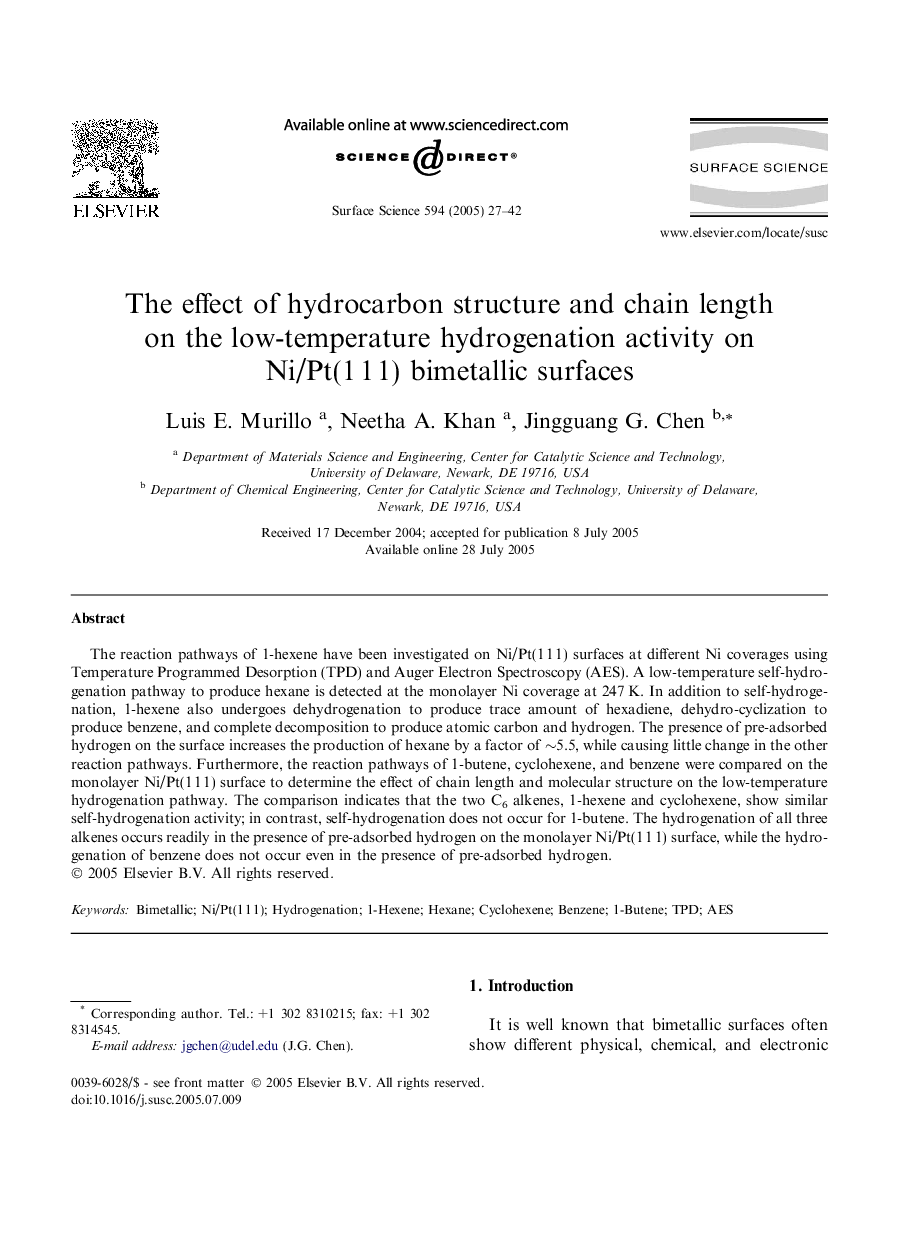| Article ID | Journal | Published Year | Pages | File Type |
|---|---|---|---|---|
| 9594955 | Surface Science | 2005 | 16 Pages |
Abstract
The reaction pathways of 1-hexene have been investigated on Ni/Pt(1Â 1Â 1) surfaces at different Ni coverages using Temperature Programmed Desorption (TPD) and Auger Electron Spectroscopy (AES). A low-temperature self-hydrogenation pathway to produce hexane is detected at the monolayer Ni coverage at 247Â K. In addition to self-hydrogenation, 1-hexene also undergoes dehydrogenation to produce trace amount of hexadiene, dehydro-cyclization to produce benzene, and complete decomposition to produce atomic carbon and hydrogen. The presence of pre-adsorbed hydrogen on the surface increases the production of hexane by a factor of â¼5.5, while causing little change in the other reaction pathways. Furthermore, the reaction pathways of 1-butene, cyclohexene, and benzene were compared on the monolayer Ni/Pt(1Â 1Â 1) surface to determine the effect of chain length and molecular structure on the low-temperature hydrogenation pathway. The comparison indicates that the two C6 alkenes, 1-hexene and cyclohexene, show similar self-hydrogenation activity; in contrast, self-hydrogenation does not occur for 1-butene. The hydrogenation of all three alkenes occurs readily in the presence of pre-adsorbed hydrogen on the monolayer Ni/Pt(1Â 1Â 1) surface, while the hydrogenation of benzene does not occur even in the presence of pre-adsorbed hydrogen.
Related Topics
Physical Sciences and Engineering
Chemistry
Physical and Theoretical Chemistry
Authors
Luis E. Murillo, Neetha A. Khan, Jingguang G. Chen,
